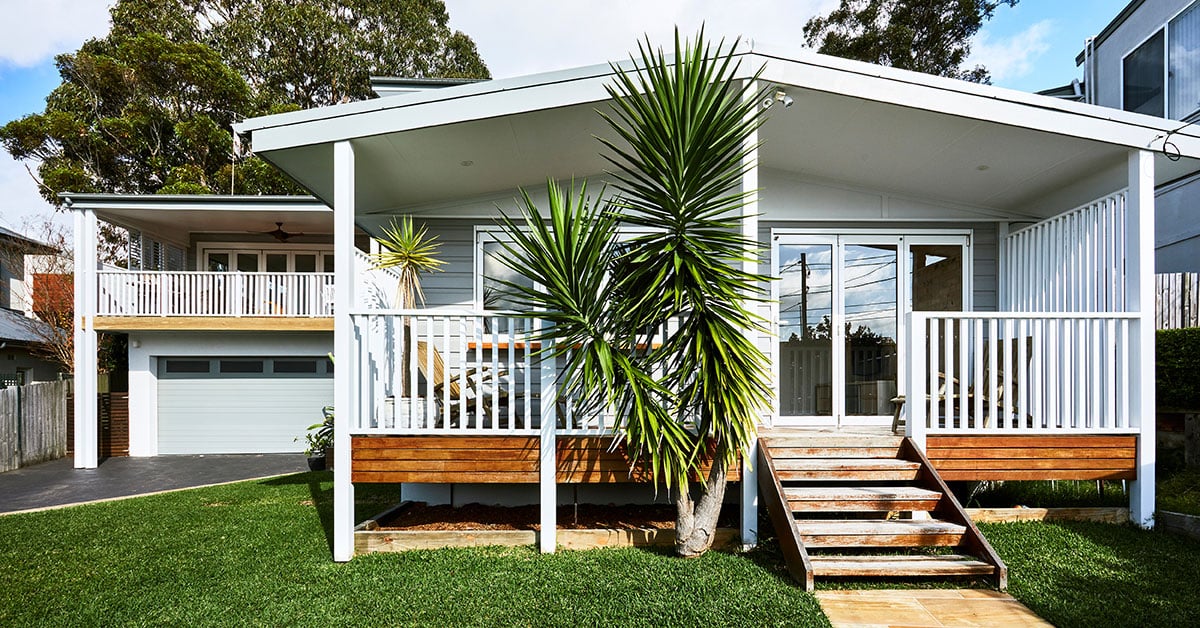Benefits of Passive Building Design
The Principles of Passive Building Design
Passive building design is an aspect of good building design. There are seven key elements which can be used to design homes that are naturally heated and cooled and therefore require minimal mechanical heating or cooling.
For most of Australia (excluding the Top End region) the orientation of a building to face north to access the free heat from the sun is the starting point. The other six elements – spatial zoning, thermal mass, ventilation, insulation, shading and glazing – can then be integrated to create a beautiful whole house solution.
Different areas in Australia require different approaches to passive building design and orientation. For example, tropical climates require the sun to be “held at bay” pretty much all year round, as the sun is both more powerful and tracks much further south in summer.
Orientation
Orientation is of greatest importance in heating climate zones – that is, in the more southerly (temperate and cool) parts of Australia.
Orientation in its simplest form means locating living areas like the lounge room on the north side of the house, with windows having clear access to sunlight especially in mid-winter.
Effective orientation provides a minimum of about five hours of useful solar heating a day. Even with this, the glass will still be exposed to about 19 hours of varying degrees of heat loss. So it’s important that other elements of passive design support the orientation, or the effect will be lost.

Ventilation
Ventilation can improve comfort levels and the air quality in your home. Most Australian homes rely on a combination of exhaust fans in kitchens and bathrooms and windows and doors (and in older homes fixed wall vents) that open to provide ventilation.
Ventilation is important in passive solar design to help cool a house by allowing air to move and escape. The aim is to design for effective cross-flow of air through the building. The design must align windows with internal doors in a way that does not block breezes, and to not locate rooms where they block breeze paths.
Zoning
Passive solar design uses zoning to help regulate temperature in a home. Doors close off rooms and spaces and stop warm air escaping from living areas into empty corridors. Zoning also keeps cool air in during summer so if you use the air conditioner you only cool the room you need and not the entire home.
Insulation
Insulation is like a barrier, helping to regulate heat flow into and out of your home. By reducing heat flow you can maintain a comfortable temperature inside, regardless of the temperature outside. The type and level of insulation needed varies depending on where you live and the building materials used for the house. If you live in a naturally ventilated home in the tropics, the aim of insulation is to reduce the amount of heat getting in without restricting the hot air escaping. Reflective insulation under the roof and in walls that are not permanently shaded would work well.
In an alpine region, however, you would want to stop heat flowing out in winter and prevent heat coming in during summer. Such homes benefit from reflective insulation under the roof, floors and in walls, and bulk insulation in the ceiling and walls.
Thermal Mass
Thermal mass is a measure of a material’s ability to absorb and release heat. Good passive design uses thermal mass to absorb excess heat from within a house during summer days and dump it to cool night skies. In winter, solar radiation warms the mass during the day, re-radiating it to the occupants at night. It is critical that thermal mass is well insulated from external temperatures and that it is exposed to winter sun in cooler climate zones.
Bricks and concrete are the most commonly available high mass materials, but rammed earth and mud bricks can also be used.
Windows and Glazing
The size of the window has a large influence on comfort, as it is both the biggest source of heat loss and heat gain. Ideally, in most climates of Australia except the Top End region, the top of the window should be lower than the eaves by 30% of the height from window sill to underside of eaves.
Otherwise, that window area will be permanently in shade i.e. receives no solar gain in winter. The width of the eave (or other shading device) should vary according to the height of the glass it is shading.
See the table below for how the rule is applied.
| Height of Window, door or main glazed area | Width of eave |
| 900-1200mm | 450mm |
| 1200-1350mm | 600mm |
| 1350-2100mm | 900mm |
| 2100-2700mm (floor to ceiling height window or glass doors) | 1200mm |
It’s important not to overlook glazing in windows and doors when thinking about heat flow. A great deal of heat can pass through single-pane glass, which can compromise an otherwise well-insulated house. Windows can be insulated in a number of ways such as with curtains and blinds. To improve the insulating properties of the window itself consider installing double or triple glazing. If you are installing new windows, also consider the frame types as they can also be a big source of heat loss and heat gain.
Shading
External shading devices can block up to 90% of the unwanted direct sunlight hitting your windows during summer. There are two main types of external shading to choose from: fixed shading devices and ones that can adapt to seasonal changes. Fixed devices such as eaves and pergolas have been the traditional mainstay for shading. These can be designed (particularly on the northern side of a house) to allow the winter sun to enter but exclude the hot summer sun.
Seasonal shading such as sails and awnings can be put up and pulled down when needed, so you have more control over how much sun you invite into your living space.
Plants and landscaping play a very important part in reducing unwanted glare and heat gain. For best results, plant deciduous vines or trees to the north, and deciduous or evergreen trees to the east and west. Evergreen plants are recommended for tropical and some hot, dry climates.
It is important to know where and when the sun hits your house and garden to plan for shading.
Share



